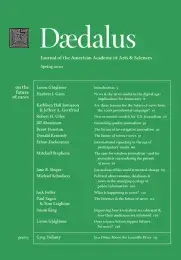International reporting in the age of participatory media
In the wake of Iran’s disputed 2009 presidential election, millions of protesters took to the streets of Tehran, some attempting to start a “green revolution” to oust President Ahmedinejad and other authority figures. The Iranian government attempted to quell the protests by arresting the instigators, and to render them invisible by tightly controlling media coverage of events. On June 16, a day after an estimated three million protesters marched on Azadi Street, Iran’s Ministry of Culture issued a partial ban targeting international reporters. Reporters could remain within Iran, but were banned from leaving their offices or hotel rooms and were explicitly prohibited from covering the protests.
With strong audience interest in stories from Iran, news organizations faced a challenge: how do you report a story you have been banned from covering? Protesters in Iran and their supporters abroad quickly proffered one answer: cover Iran via citizen media. CNN relied heavily on its iReport site, which invites amateurs to submit videos of breaking news; the network aired 180 of the roughly 5,200 Iran-related videos they received.1 Robert Mackey of The New York Times focused the Times news blog, The Lede, on the protests, excerpting at length from Iran-focused blogs. Newsweek offered a “Twitter Timeline,” with key events in the protests illustrated by 140-character posts (“tweets”).
The embrace of citizen media in the Iran coverage by professional journalism organizations represents a small, but dramatic, shift in the structure of international news, a quiet revolution transforming how we understand events in other countries. But as the Tehran street protests were a result not just of a disputed election but of deeper factors, professional journalism’s embrace of the amateur reflects a series of shifts beyond a press ban in Iran.
A wealth of analysis has focused on “the crisis in journalism,” the sharp decline in revenues for many U.S. newspapers that correlates with layoffs of experienced journalists, and the closure of influential newspapers like Denver’s Rocky Mountain News. There is no doubt that fiscal pressures on news organizations are affecting international news coverage. Only four U.S. newspapers maintain significant overseas bureaus, while the television network ABC has moved toward covering countries via single “digital reporters,” who are less costly than fully staffed bureaus. Alisa Miller, president of Public Radio International, argues that financial pressures are moving television networks away from international stories and toward celebrity journalism because “covering Britney [Spears] is cheaper.”
. . .
